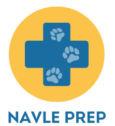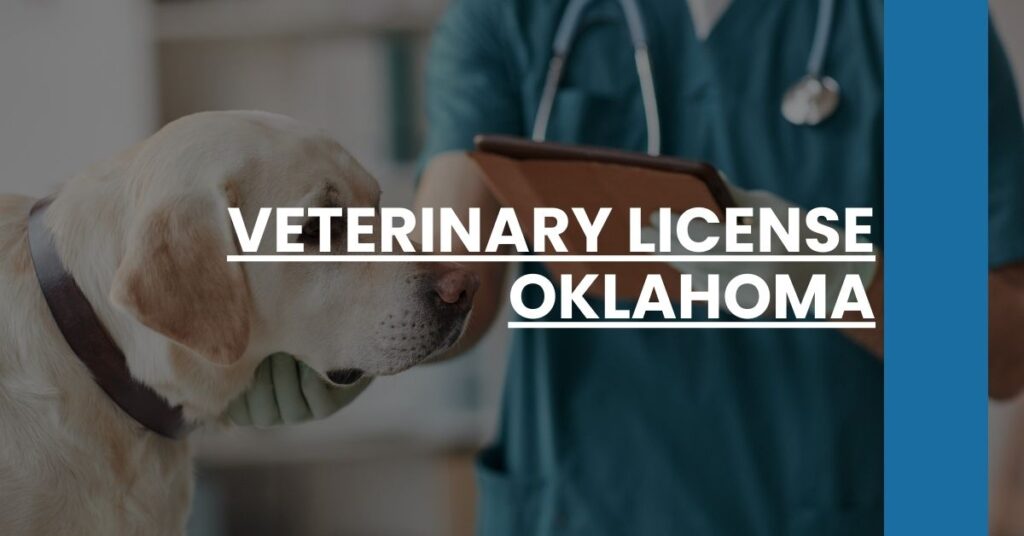Looking for schools in a specific city? Check out our lists of Veterinarian Schools in Oklahoma City, Tulsa, Norman, and Broken Arrow.
Navigating the path to obtaining your Veterinary License in Oklahoma can be a bit overwhelming. As someone who’s been in the field for years, I understand the challenges, from acing critical examinations to keeping up with licensure requirements. That’s why we’ve put together an in-depth guide to assist you through the process seamlessly.
In this guide, you’ll discover:
- Steps to become a veterinarian and secure your Veterinary License Oklahoma
- Specific licensure and certification requirements in the state
- Tips and resources for preparing for key exams and continuing education
Our team’s expertise and gathered resources are aimed at ensuring you’re well-prepared for this rewarding career.
- Steps to Become a Veterinarian in Oklahoma
- Licensure and Certification Requirements in Oklahoma
- Top Veterinary Schools in Oklahoma
- Preparing for the NAVLE Examination
- Veterinary Schools Near Me
- Continuing Education Requirements for Veterinarians in Oklahoma
- Career Opportunities and Salary Expectations for Veterinarians in Oklahoma
- Frequently Asked Questions about Veterinary Licensing in Oklahoma
- Useful Resources for Aspiring Veterinarians in Oklahoma
- Becoming a Veterinarian
- Looking for Veterinarian Information On States Bordering Oklahoma?
- Conclusion and Next Steps
Steps to Become a Veterinarian in Oklahoma
Becoming a veterinarian in Oklahoma requires dedication, study, and commitment. Follow these steps to ensure you meet the necessary qualifications and prepare for a rewarding career in veterinary medicine.
Educational Path
- Earn a Bachelor’s Degree: Start with an undergraduate degree that emphasizes coursework in biology, chemistry, physiology, and microbiology. These foundational sciences are crucial for your advanced studies in veterinary medicine.
- Complete a Doctor of Veterinary Medicine (DVM) Program: Attend an accredited veterinary school to earn your DVM. The program typically spans four years, combining classroom instruction with practical clinical rotations.
- Clinical Rotations: During the latter part of the DVM program, you will participate in clinical rotations. These rotations provide hands-on experience in various veterinary specialties, allowing you to apply your classroom knowledge in real-world settings.
Licensing Examination
To practice veterinary medicine in Oklahoma, you must pass the North American Veterinary Licensing Examination (NAVLE). Here’s a brief overview:
- NAVLE Overview: The exam consists of 360 multiple-choice questions, assessing your knowledge and diagnostic skills.
- Preparation: Consider using resources like VetPrep, VIN’s NAVLE review courses, and Zuku Review to enhance your preparation. Practice assessments and effective study management are vital.
You can find more information and prepare using resources from the International Council for Veterinary Assessment (ICVA).
Licensure and Certification Requirements in Oklahoma
Once you’ve successfully completed your DVM and passed the NAVLE, the next step is obtaining your veterinary license through the Oklahoma State Board of Veterinary Medical Examiners (OSBVME). Here’s how:
Application Process
- Submit Licensing Application: Complete the required forms provided by the OSBVME.
- Verification Fee: This standard fee is $20 plus a $2.70 processing fee. For new graduates, a waiver may be available—contact OSBVME at (405) 522-8831 for details.
Additional Requirements
- Jurisprudence Exam: Oklahoma requires you to pass a jurisprudence exam with a $150 fee. This exam tests your knowledge of state laws and regulations related to veterinary practice.
- Continuing Education: You must complete 20 hours of continuing education (CE) annually to maintain your license. This ensures that you stay updated on the latest advancements and best practices in veterinary medicine.
The next board meeting for application review is scheduled for September 6, 2024, at 2920 N Lincoln Blvd, Oklahoma City. For further details, visit the Oklahoma State Board of Veterinary Medical Examiners’ website.
Top Veterinary Schools in Oklahoma
Choosing the right veterinary school is crucial to your success. Oklahoma offers several esteemed programs:
Oklahoma State University Stillwater
- Reputation and Rankings: Ranked #17 in the U.S., this university is renowned for its research excellence and comprehensive veterinary education.
- Program Highlights: The veterinary program at Oklahoma State University offers extensive clinical training, with opportunities to specialize in various fields of veterinary medicine.
University of Oklahoma – Health Sciences Center (Oklahoma City)
- Academic Excellence: Ranked #161 in the U.S., this center provides robust academic programs and facilities for aspiring veterinarians.
- Resources: The Health Sciences Center offers modern laboratories and research opportunities, enhancing your educational experience.
University of Oklahoma – Norman
- Student Scores: This university boasts strong SAT and ACT scores, with a comprehensive science curriculum to prepare you for a career in veterinary medicine.
- Campus Facilities: Access to advanced laboratories and clinical training environments.
Langston University
- Accessibility and Support: Known for its 100% acceptance rate and extensive financial aid options, Langston University ensures that financial constraints do not hinder your educational aspirations.
- Curriculum: The program includes practical experience alongside academic coursework, fostering well-rounded veterinary professionals.
You can explore more about these educational institutions through the best veterinary schools page.
Preparing for the NAVLE Examination
Acing the NAVLE is essential for obtaining your Veterinary License Oklahoma. Preparing adequately can make a significant difference.
Study Resources
- VetPrep: Offers an online platform with over 2000 practice questions specifically designed to mirror the NAVLE exam format.
- VIN NAVLE Review Course: This comprehensive review course provides detailed insights, practice tests, and study guides tailored for NAVLE preparation.
- Zuku Review: Known for its extensive question banks and self-assessment tools, Zuku Review is an invaluable study aid.
- ICVA: Provides free resources, tutorials, and sample questions to familiarize you with the exam format.
Study Tips
- Start Early: Begin your preparation months in advance to avoid last-minute cramming. Spread out your study sessions to enhance retention.
- Practice Assessments: Regularly take practice exams to assess your progress and identify areas needing improvement.
- Manage Your Time: Allocate specific hours each day for study sessions, ensuring a balanced review of all exam content areas.
For additional study materials and practice tests, visit the NAVLE practice test site.
Veterinary Schools Near Me
Finding a veterinary school that is geographically convenient can simplify your educational journey:
- Local Institutions: Oklahoma State University and the University of Oklahoma offer reputable programs within the state, minimizing relocation needs.
- Regional Options: Nearby states also house esteemed veterinary schools worth considering if you’re willing to relocate for a top-tier education.
For a detailed list of veterinary schools, explore the veterinary schools resource.
By following these detailed steps and taking advantage of the resources available, you will be well on your way to securing your Veterinary License in Oklahoma and embarking on a fulfilling career in veterinary medicine.
Continuing Education Requirements for Veterinarians in Oklahoma
Maintaining your knowledge and skills is vital for a successful veterinary career. Oklahoma mandates continuing education (CE) for veterinarians to ensure they remain updated on the latest practices and standards.
Annual CE Requirements
To renew your veterinary license in Oklahoma, you need to complete 20 hours of CE annually. Of these, at least 2 hours must focus on controlled substance laws or an overview of the Oklahoma Veterinary Practice Act. These specific hours ensure that you remain informed about legal and regulatory aspects crucial to your practice.
Approved CE Activities
You can fulfill your CE requirements through a variety of approved activities, including:
- College Seminars: These typically offer in-depth explorations of relevant veterinary topics.
- Scientific Meetings: Conferences and symposia provide cutting-edge research and networking opportunities.
- Online Interactive Courses: These offer flexibility and cover a wide range of subjects.
Completing CE Activities
Ensure your CE activities are approved by the OSBVME. Always keep records of completed CE hours, as you may need to provide proof upon renewing your license. Engage in courses that not only fulfill your requirements but also enhance your professional development.
More information regarding CE requirements is available on the Oklahoma State Board of Veterinary Medical Examiners’ website.
Career Opportunities and Salary Expectations for Veterinarians in Oklahoma
Oklahoma offers various career opportunities for veterinarians, each with different roles and salary expectations.
Job Market Overview
Veterinarians can work in numerous settings, including:
Private Clinics and Veterinary Hospitals: Most veterinarians find employment in private clinics or hospitals. Examples include VCA Animal Hospitals in Tulsa and other parts of Oklahoma, which often seek skilled veterinarians.
Academic Roles: Institutions like Oklahoma State University provide career opportunities for veterinarians interested in teaching and research. These roles allow you to shape future generations of veterinarians.
Salary Expectations
Veterinarian salaries in Oklahoma can vary based on experience, specialization, and location. The average veterinarian salary in Oklahoma is around $100,196, with a range from $78,684 to $127,162. Specializing in areas like surgery, oncology, or exotic animal care can potentially increase your earning potential.
Growth Opportunities
The veterinary field in Oklahoma is growing, providing ample opportunities for career advancement. Joining professional organizations and attending networking events can help you connect with potential employers and stay informed about job openings.
Frequently Asked Questions about Veterinary Licensing in Oklahoma
Understanding the licensing process is crucial. Here are some commonly asked questions about obtaining your veterinary license in Oklahoma.
What are the requirements for new graduates versus experienced professionals?
New graduates from an accredited DVM program need to pass the NAVLE and the Oklahoma jurisprudence exam. They must also submit a licensing application and complete a background check. Experienced professionals may have additional requirements, such as proof of prior licensure in other states and verification of past CE activities.
What are the key deadlines for application and renewal processes?
- Licensing Application Submission: Applications should be submitted well before the upcoming board meeting, typically scheduled quarterly.
- License Renewal: Renew your license annually by completing the required CE hours and submitting your renewal application before the expiration date.
How can I contact the Oklahoma State Board of Veterinary Medical Examiners?
You can reach the OSBVME for inquiries or assistance at (405) 522-8831 or via email support. Their website also provides resources and information pertinent to licensing and practice regulations in Oklahoma.
For more details, visit the Oklahoma State Board of Veterinary Medical Examiners’ website.
Useful Resources for Aspiring Veterinarians in Oklahoma
Several resources can help you throughout your journey towards becoming a veterinarian in Oklahoma.
Professional Organizations
- American Veterinary Medical Association (AVMA): Offers student externship locators and career resources.
- Oklahoma Veterinary Medical Association (OVMA): Provides local networking opportunities, CE courses, and job listings.
Educational Tools
- ICVA Resources: Provides materials and sample questions for NAVLE preparation.
- Oklahoma Extension CowCulator: A practical tool for cattle nutrition, beneficial for those working in rural or agricultural settings.
These resources can serve as valuable aids in your preparation and career development.
Link: Best veterinary schools
Becoming a Veterinarian
Are you passionate about animal care and interested in becoming a veterinarian? Below are the essential steps to get you started:
Educational Pathway
- Earn a Bachelor’s Degree: Focus on pre-veterinary courses that build a strong foundation in biological sciences.
- Graduate from an Accredited DVM Program: This rigorous program prepares you with both theoretical knowledge and practical skills.
- Pass Required Exams: Successfully complete the NAVLE and any state-specific exams, such as the Oklahoma jurisprudence exam.
Gaining Experience
Internships, externship programs, and volunteer work at veterinary clinics can provide hands-on experience, essential for building a robust resume and enhancing your skills.
Link: How to become a veterinarian
Looking for Veterinarian Information On States Bordering Oklahoma?
In addition to Oklahoma, we suggest looking for schools in nearby states.
- Veterinary License Kansas
- Veterinary License Missouri
- Veterinary License Arkansas
- Veterinary License Texas
- Veterinary License Colorado
Conclusion and Next Steps
You’re now equipped with the knowledge required to pursue a veterinary career in Oklahoma. Follow these steps, make use of the outlined resources, and embark on your journey towards becoming a licensed veterinarian in Oklahoma. This path promises a fulfilling career dedicated to animal care and welfare.

